-
 Bitcoin
Bitcoin $88,629.0112
1.53% -
 Ethereum
Ethereum $1,633.3416
0.24% -
 Tether USDt
Tether USDt $1.0000
0.01% -
 XRP
XRP $2.0979
-1.08% -
 BNB
BNB $605.5535
0.62% -
 Solana
Solana $140.2764
0.66% -
 USDC
USDC $1.0000
0.01% -
 Dogecoin
Dogecoin $0.1643
1.41% -
 TRON
TRON $0.2438
0.47% -
 Cardano
Cardano $0.6391
-0.43% -
 Chainlink
Chainlink $13.4401
-0.21% -
 Avalanche
Avalanche $20.3874
-0.96% -
 UNUS SED LEO
UNUS SED LEO $8.8373
-2.11% -
 Stellar
Stellar $0.2496
-3.26% -
 Sui
Sui $2.3313
3.08% -
 Shiba Inu
Shiba Inu $0.0...01260
-0.18% -
 Hedera
Hedera $0.1732
1.55% -
 Toncoin
Toncoin $2.9117
-3.34% -
 Bitcoin Cash
Bitcoin Cash $346.5808
1.81% -
 Hyperliquid
Hyperliquid $18.4964
3.15% -
 Litecoin
Litecoin $79.8162
-0.77% -
 Polkadot
Polkadot $3.7801
-3.27% -
 Dai
Dai $1.0000
0.00% -
 Bitget Token
Bitget Token $4.4558
-0.32% -
 Ethena USDe
Ethena USDe $0.9992
0.01% -
 Pi
Pi $0.6369
0.62% -
 Monero
Monero $217.7312
1.28% -
 Pepe
Pepe $0.0...08147
2.99% -
 Uniswap
Uniswap $5.4346
0.09% -
 Aptos
Aptos $4.9660
-4.00%
How to withdraw Bitcoin spot trading?
Securely withdrawing Bitcoin from spot trading involves choosing a reputable exchange, verifying your identity, carefully confirming the receiving address, and monitoring the transaction for completion before securing your Bitcoin in a personal wallet.
Feb 28, 2025 at 09:13 am
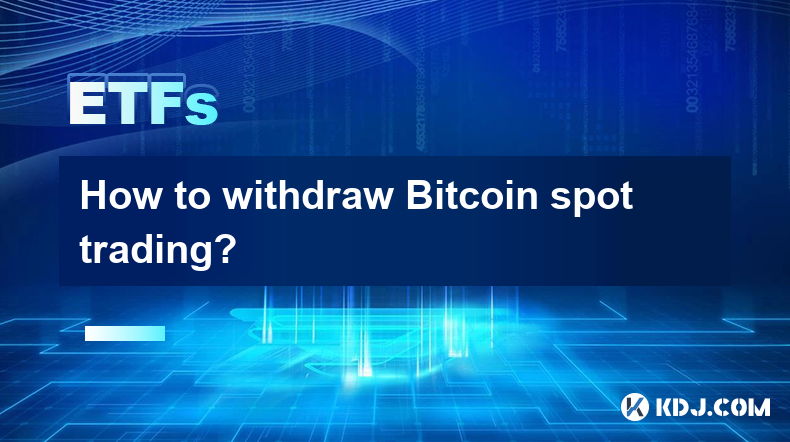
How to Withdraw Bitcoin Spot Trading: A Comprehensive Guide
Key Points:
- Understanding Spot Trading and Withdrawals: Spot trading involves buying and selling Bitcoin at the current market price. Withdrawals refer to transferring your Bitcoin from the exchange's wallet to a personal wallet you control. This process differs significantly from other trading methods and requires careful attention to security.
- Choosing Your Withdrawal Method: Exchanges offer various withdrawal methods, including on-chain transfers (directly to your Bitcoin address), and potentially off-chain solutions depending on the exchange. Each method has its own speed, fee structure, and security implications.
- Security Best Practices: Securing your Bitcoin during withdrawal is paramount. This involves using strong passwords, two-factor authentication (2FA), and verifying the receiving address meticulously to prevent irreversible losses.
- Understanding Withdrawal Fees and Limits: Exchanges charge fees for withdrawals, which vary depending on the method chosen and the network congestion. There are often minimum and maximum withdrawal limits as well.
- Troubleshooting Common Issues: Withdrawal problems can arise from various sources, including insufficient funds, incorrect addresses, network congestion, and exchange-specific issues. Knowing how to troubleshoot these problems is crucial.
Steps to Withdraw Bitcoin from Spot Trading:
- Step 1: Selecting a Reputable Exchange and Verifying Your Identity:
Before even considering a Bitcoin withdrawal, you need to choose a reputable cryptocurrency exchange. This is the most crucial step. Research is essential; look for exchanges with a strong track record, positive user reviews, and robust security measures. Check for regulatory compliance where applicable. Once you’ve selected an exchange, you'll likely need to go through a Know Your Customer (KYC) verification process. This usually involves providing identification documents (passport, driver's license) and proof of address. This process is necessary for regulatory compliance and to protect the exchange and its users from fraudulent activities. Thoroughly review the exchange's terms of service and security policies before proceeding. Be aware that different exchanges have different KYC requirements, and some may have more stringent processes than others. Failure to complete the KYC process fully may restrict your ability to withdraw funds. Take your time to fill out the forms accurately and completely; incorrect information can delay or prevent withdrawals. The entire process, depending on the exchange and its verification procedures, can take anywhere from a few minutes to several days. It's advisable to start this process well in advance of when you intend to make a withdrawal. Remember, a secure and reputable exchange is the foundation for a successful and secure withdrawal.
- Step 2: Funding Your Exchange Account and Confirming Your Bitcoin Balance:
After completing the KYC process and verifying your account, you need to deposit Bitcoin into your exchange account. This typically involves sending Bitcoin from your personal wallet (hardware or software) to your exchange-provided Bitcoin deposit address. Double and triple-check the address you're sending your Bitcoin to. A single misplaced character can result in the irreversible loss of your funds. After sending your Bitcoin, wait for sufficient confirmations on the blockchain (usually 1-6 confirmations, depending on the exchange's policy and the Bitcoin network's congestion). Once the confirmations are complete, your Bitcoin balance should reflect the deposited amount on your exchange account. Before initiating a withdrawal, carefully review your account balance to ensure you have the desired amount of Bitcoin available for withdrawal. Take note of any potential transaction fees that might be deducted from your balance before the withdrawal is processed. Understanding the balance and potential fees is vital for accurate budgeting and preventing unexpected surprises during the withdrawal process. If you encounter any issues during the deposit process, contact the exchange's customer support for assistance.
- Step 3: Initiating the Bitcoin Withdrawal Process:
Once your Bitcoin balance is confirmed, navigate to the withdrawal section of your exchange account. This section is usually clearly labeled and easily accessible. You'll need to specify the amount of Bitcoin you wish to withdraw. Be mindful of any minimum or maximum withdrawal limits imposed by the exchange. These limits can vary depending on the exchange and the chosen withdrawal method. Next, you’ll need to enter the Bitcoin receiving address where you want your Bitcoin transferred. This is extremely important; double-check, triple-check, and even quadruple-check the address to ensure it's accurate. Entering an incorrect address can lead to the permanent loss of your Bitcoin. Most exchanges will provide a warning or confirmation step to minimize the risk of errors. Pay close attention to this step and take your time to verify the address before proceeding. Once you've entered the receiving address and amount, review all the details carefully one last time before confirming the withdrawal. This step is your final chance to catch any errors before the transaction is irreversible. After confirming, you’ll typically receive a confirmation email or notification from the exchange.
- Step 4: Monitoring the Withdrawal Transaction:
After initiating the withdrawal, monitor the transaction's progress. The time it takes for the withdrawal to complete depends on several factors, including the exchange's processing time, the Bitcoin network's congestion, and the chosen withdrawal method. Most exchanges provide transaction IDs or tracking links that allow you to follow the progress of your withdrawal. Check the blockchain explorer (e.g., Blockchain.com, Blockcypher.com) using the transaction ID to view the transaction status and confirmations. Be patient; Bitcoin transactions can sometimes take time, especially during periods of high network activity. If the withdrawal is delayed significantly beyond the expected timeframe, contact the exchange's customer support for assistance. They may be able to provide more information about the status of your withdrawal and troubleshoot any potential issues. Always remain vigilant and cautious, and avoid contacting unofficial support channels.
- Step 5: Securing Your Bitcoin in a Personal Wallet:
Once your Bitcoin withdrawal is complete and has received sufficient confirmations on the blockchain, your Bitcoin will be available in your chosen personal wallet. It's crucial to secure your personal wallet using strong passwords, two-factor authentication (2FA), and other security measures. Consider using a hardware wallet for enhanced security, as it stores your private keys offline, making them less vulnerable to hacking attempts. Regularly back up your wallet and keep your seed phrase (recovery phrase) in a safe and secure location. The seed phrase is crucial for recovering access to your wallet if you lose or damage your device. Never share your seed phrase with anyone, and be wary of phishing scams that attempt to obtain your private information. Your personal wallet is the final destination for your withdrawn Bitcoin, and its security is paramount to protecting your investment.
FAQs:
Q: What are the different withdrawal methods available for Bitcoin spot trading?
A: Common withdrawal methods include on-chain transfers directly to your Bitcoin address (which is the most common and secure method), and potentially other methods that might be offered by specific exchanges. The availability of different methods depends on the exchange.
Q: How long does a Bitcoin withdrawal take?
A: The time it takes for a Bitcoin withdrawal to complete can vary greatly depending on the exchange's processing time, network congestion, and the chosen withdrawal method. It can range from a few minutes to several hours or even longer in some cases.
Q: What are the fees associated with Bitcoin withdrawals?
A: Exchanges typically charge withdrawal fees, which vary depending on the chosen method and network congestion. These fees are usually deducted from your Bitcoin balance before the withdrawal is processed.
Q: What should I do if my Bitcoin withdrawal is delayed or unsuccessful?
A: If your Bitcoin withdrawal is delayed or unsuccessful, contact the exchange's customer support immediately. They can investigate the issue and provide assistance. Ensure you are contacting official support channels and not falling prey to scams.
Q: What is the best way to secure my Bitcoin after withdrawing it from an exchange?
A: The best way to secure your Bitcoin is to store it in a secure personal wallet, ideally a hardware wallet. Always enable two-factor authentication (2FA) and keep your seed phrase safe and secure. Never share your private keys or seed phrase with anyone.
Disclaimer:info@kdj.com
The information provided is not trading advice. kdj.com does not assume any responsibility for any investments made based on the information provided in this article. Cryptocurrencies are highly volatile and it is highly recommended that you invest with caution after thorough research!
If you believe that the content used on this website infringes your copyright, please contact us immediately (info@kdj.com) and we will delete it promptly.
- From a Coin That Wasn't Supposed to Exist to Another That Got Melted Down
- 2025-04-22 21:00:12
- 3 Cryptos to Buy Now Before Parabolic Gains Hit
- 2025-04-22 21:00:12
- Coinbase Derivatives launches XRP-Future contracts, approved by the American Commodity Futures Trading Commission (CFTC)
- 2025-04-22 20:55:13
- Amp (AMP) price prediction: Can this token continue its bullish run?
- 2025-04-22 20:55:13
- Trump Establishes a Limited Bitcoin Strategic Reserve via Executive Order
- 2025-04-22 20:50:12
- Meme Coin Did Not Ruin This Cycle, But Instead Accelerated the Maturity of the Industry as a Market Catalyst
- 2025-04-22 20:50:12
Related knowledge

What is the difference in returns between long-term holding of a Bitcoin ETF and holding Bitcoin directly?
Apr 09,2025 at 04:15am
When considering the difference in returns between long-term holding of a Bitcoin ETF and holding Bitcoin directly, it's essential to understand the nuances and factors that affect each investment option. Both approaches have their unique advantages and potential drawbacks, which can significantly impact the overall returns over time. Understanding Bitc...
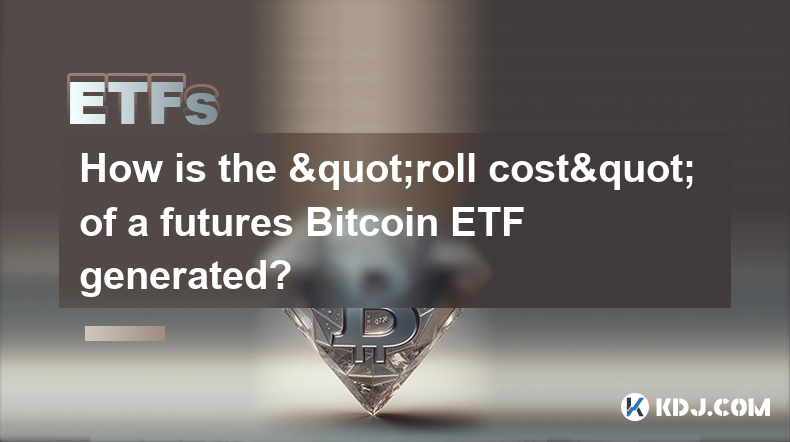
How is the "roll cost" of a futures Bitcoin ETF generated?
Apr 08,2025 at 01:22pm
The 'roll cost' of a futures Bitcoin ETF is a critical concept for investors to understand, as it directly impacts the performance of the ETF. In this article, we will delve into the mechanics of how the roll cost is generated, exploring the underlying processes and factors that contribute to this cost. Understanding Futures ContractsFutures contracts a...
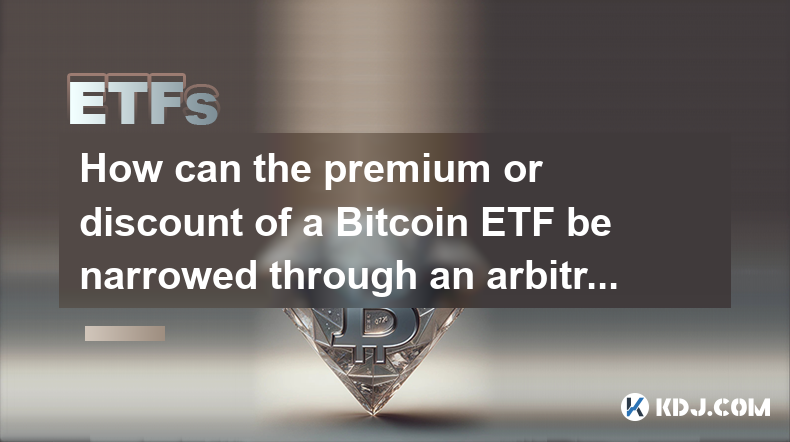
How can the premium or discount of a Bitcoin ETF be narrowed through an arbitrage mechanism?
Apr 09,2025 at 12:07am
Arbitrage mechanisms play a crucial role in narrowing the premium or discount of a Bitcoin Exchange Traded Fund (ETF). Understanding how these mechanisms work can provide valuable insights into the dynamics of Bitcoin ETFs and their relationship with the underlying asset. This article will delve into the specifics of how arbitrage can be used to align t...
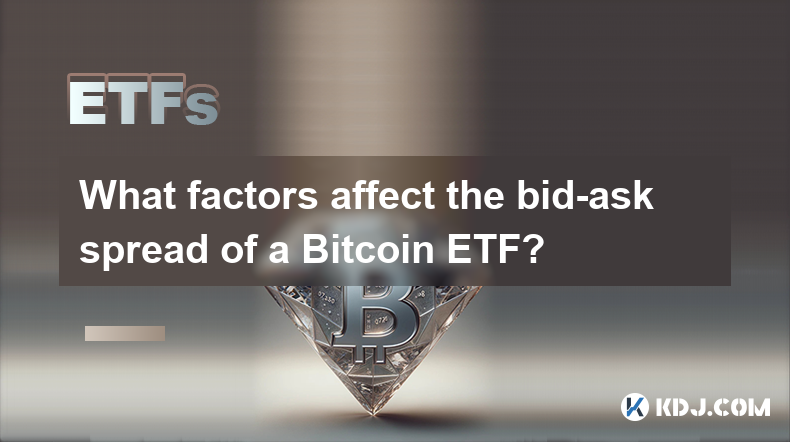
What factors affect the bid-ask spread of a Bitcoin ETF?
Apr 08,2025 at 08:50pm
The bid-ask spread of a Bitcoin Exchange Traded Fund (ETF) is a critical metric that investors and traders closely monitor. It represents the difference between the highest price a buyer is willing to pay (bid) and the lowest price a seller is willing to accept (ask). Several factors influence this spread, and understanding them can help investors make ...
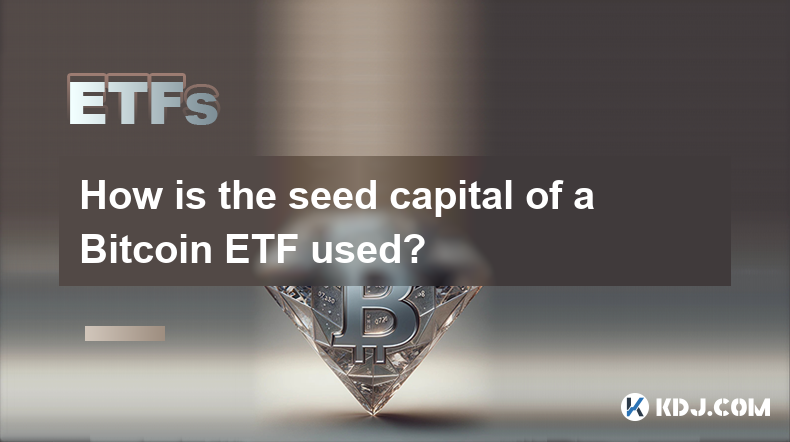
How is the seed capital of a Bitcoin ETF used?
Apr 10,2025 at 02:15pm
The seed capital of a Bitcoin ETF plays a crucial role in the establishment and operation of the fund. This initial investment is used to create the fund's underlying assets, manage operational costs, and ensure the ETF can start trading on an exchange. Understanding how this seed capital is utilized provides insight into the mechanics of Bitcoin ETFs a...

What is the difference between "physically backed" and "synthetic" Bitcoin ETFs in terms of holding assets?
Apr 10,2025 at 04:56pm
Bitcoin Exchange Traded Funds (ETFs) have become a popular way for investors to gain exposure to the cryptocurrency market without directly owning the underlying asset. There are two primary types of Bitcoin ETFs: physically backed and synthetic. Understanding the differences between these two types, particularly in terms of how they hold assets, is cru...

What is the difference in returns between long-term holding of a Bitcoin ETF and holding Bitcoin directly?
Apr 09,2025 at 04:15am
When considering the difference in returns between long-term holding of a Bitcoin ETF and holding Bitcoin directly, it's essential to understand the nuances and factors that affect each investment option. Both approaches have their unique advantages and potential drawbacks, which can significantly impact the overall returns over time. Understanding Bitc...

How is the "roll cost" of a futures Bitcoin ETF generated?
Apr 08,2025 at 01:22pm
The 'roll cost' of a futures Bitcoin ETF is a critical concept for investors to understand, as it directly impacts the performance of the ETF. In this article, we will delve into the mechanics of how the roll cost is generated, exploring the underlying processes and factors that contribute to this cost. Understanding Futures ContractsFutures contracts a...

How can the premium or discount of a Bitcoin ETF be narrowed through an arbitrage mechanism?
Apr 09,2025 at 12:07am
Arbitrage mechanisms play a crucial role in narrowing the premium or discount of a Bitcoin Exchange Traded Fund (ETF). Understanding how these mechanisms work can provide valuable insights into the dynamics of Bitcoin ETFs and their relationship with the underlying asset. This article will delve into the specifics of how arbitrage can be used to align t...

What factors affect the bid-ask spread of a Bitcoin ETF?
Apr 08,2025 at 08:50pm
The bid-ask spread of a Bitcoin Exchange Traded Fund (ETF) is a critical metric that investors and traders closely monitor. It represents the difference between the highest price a buyer is willing to pay (bid) and the lowest price a seller is willing to accept (ask). Several factors influence this spread, and understanding them can help investors make ...

How is the seed capital of a Bitcoin ETF used?
Apr 10,2025 at 02:15pm
The seed capital of a Bitcoin ETF plays a crucial role in the establishment and operation of the fund. This initial investment is used to create the fund's underlying assets, manage operational costs, and ensure the ETF can start trading on an exchange. Understanding how this seed capital is utilized provides insight into the mechanics of Bitcoin ETFs a...

What is the difference between "physically backed" and "synthetic" Bitcoin ETFs in terms of holding assets?
Apr 10,2025 at 04:56pm
Bitcoin Exchange Traded Funds (ETFs) have become a popular way for investors to gain exposure to the cryptocurrency market without directly owning the underlying asset. There are two primary types of Bitcoin ETFs: physically backed and synthetic. Understanding the differences between these two types, particularly in terms of how they hold assets, is cru...
See all articles























































































